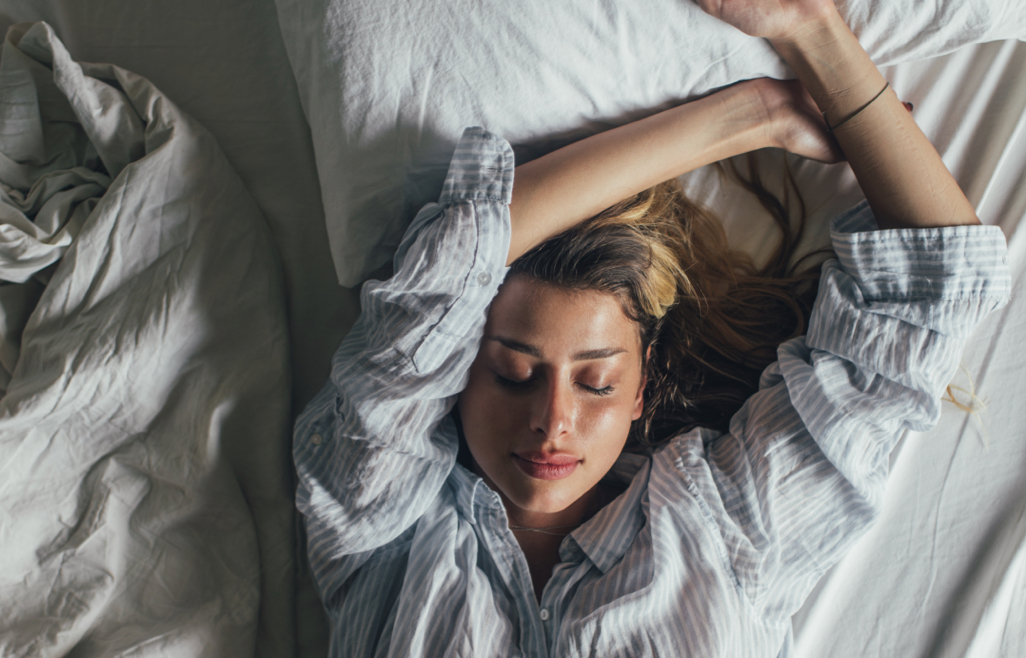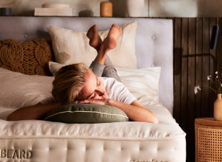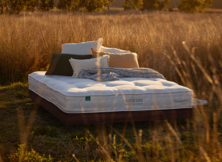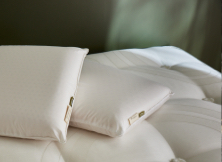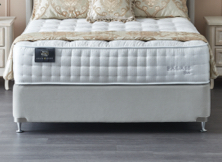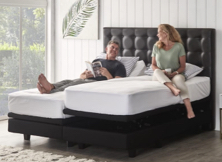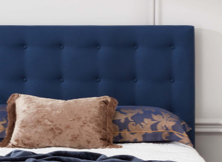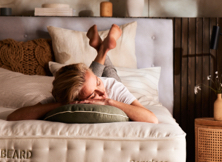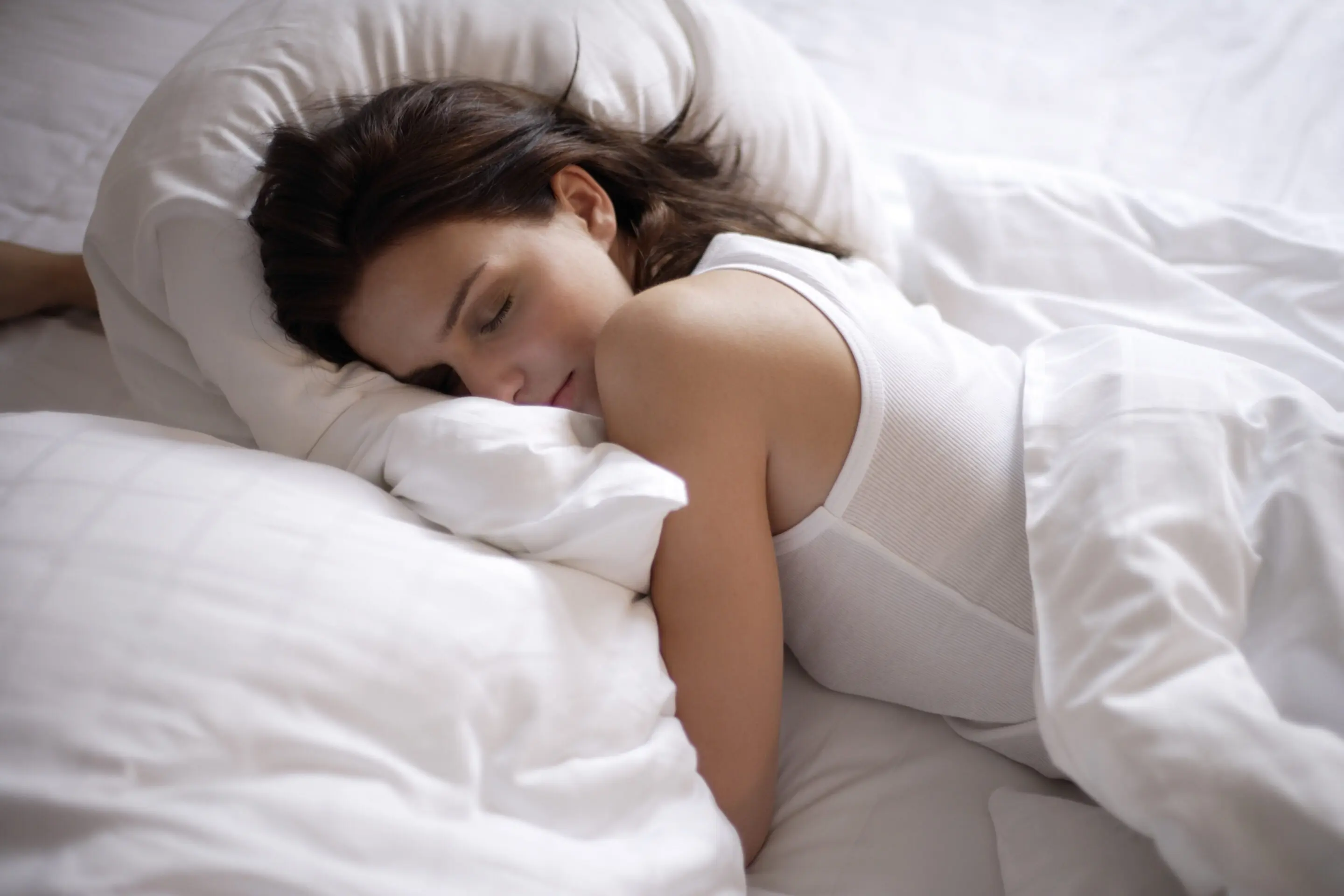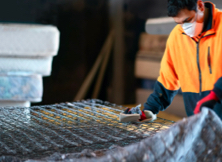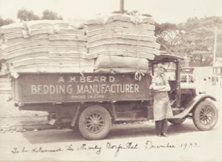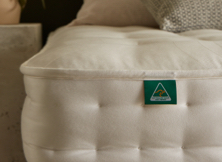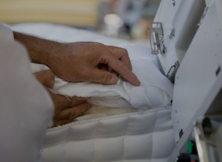Good question!
Answers to common queries about choosing and caring for your mattress. Can’t find what you’re looking for? Ask us anything via chat or get in touch.
Caring for my mattress
It’s a good idea to rotate your mattress regularly. For the first month, aim to rotate your mattress once a fortnight. You should then continue to rotate it once every month. This will ensure even wear across the entire sleep surface and prolong the life of your mattress. As our mattresses are one-sided (or non-flip), rotate your mattress 180 degrees but don’t flip it over. A.H. Beard mattresses are not designed for use on both sides.
By following these care guidelines, you can expect your mattress to provide comfort and support for many years.
- When handling your new A.H. Beard mattress, make sure you always carry it on its side and do not attempt to move it on your own
- If your mattress has handles, do not use these for carrying. Mattress handles are provided to assist with the positioning of your mattress on the base or rotating and are not load-bearing
- Never bend or fold your mattress. These actions will damage your mattress edge
- Do not use roof racks to transport your mattress. Securing a mattress to roof racks may cause it to fold, damaging the mattress edge
- Similarly, do not stand or jump on your mattress as the guarantee does not cover misuse or abuse
- Rotating your mattress from end to end every month will even out body signatures that develop as the materials settle
- Ensure that you use the whole sleep surface, including the middle. If the centre of the mattress remains unused, especially on a king-size bed, the settling of the comfort materials in this area will not occur. This means the centre of the mattress will feel and look different from your normal sleeping area
We recommend that you do not use an old base with a new mattress, as both parts of your sleep set work together to provide you with optimum comfort and support. A.H. Beard’s timber platform bases provide the best possible support for your new mattress, to prolong its life and ensure the most comfortable sleep experience.
- Ensure your base is flat and even with plenty of ventilation for your mattress
- If you have a slatted base or bedframe, ensure the slats are secured, no more than 10cm apart, and supported with a centre support rail
- Flexible slats should be convex in shape but can lose their resiliency over time, becoming concave causing irreparable damage to the mattress
- Please check slats regularly as the guarantee does not cover mattress damage caused by inadequate slat support
Using a mattress protector as well as frequently cleaning your mattress, pillow, sheets and linens is essential to maintaining a hygienic sleeping environment, and getting the best night’s sleep possible.
Our mattresses are exposed to a number of different particles, from pollen to debris, dust and more. Like any item in the home, your mattress needs to be regularly cleaned to ensure it keeps you healthy, both mentally and physically, for years to come.
So, how often should you clean your mattress and what’s the best way to ensure your mattress, and your sleeping environment, are as healthy and hygienic as possible? Read on to find out.
How often should you clean your mattress?
For most of people, we recommend doing a deep clean of your mattress at least once every six months. However, you may need to clean your mattress more frequently if you suffer from allergies or have pets at home — for example, once every two to three months.
Did you know?
Failing to keep your mattress clean and free from stains may void your mattress guarantee, as it poses a health and safety risk for our staff if it’s returned for inspection or repairs.
If you’re not sure where to start, these four tips will help you rid your sleeping environment of anything that may affect your sleep:
- Wash and air your bedding regularly. We spend anywhere from 49 to 63 hours on our sheets per week, so it’s important to clean them as often as possible. Aim to clean your bedding linens once every fortnight (or once every week if you experience night sweats), and wash your pillow and duvet every three months.
- Keep the air circulating. Try to keep air circulating in your house whenever possible by opening windows or using an air conditioner, investing in a dehumidifier, and sealing off any leaks in your home. This will help remove any lingering smells and also prevent a build-up of mould and mildew.
- Don’t forget about your furry friends! We love our pets, but pet dander? Not so much. Pet dander is made up of tiny particles that have been shed from animals with fur — and it’s one of the biggest triggers of allergic reactions such as sneezing, itching or hives. Wash your pets regularly and keep them off the furniture as much as possible, in order to reduce the amount of dander in your house. Don’t forget to vacuum the house regularly as well!
- Pop a hypoallergenic mattress protector on your mattress. These keep your mattress free of stains and reduce exposure to dust mites, microbes and other allergens.
Want to know more? Here’s how to clean your mattress: a step-by-step guide
1. Start by stripping the bed and washing your bed linens
Remove all of your sheets, pillowcases, mattress covers or protectors, duvets, and pillows and give them all a thorough clean. Make sure to read the care instructions on the label before putting anything in the wash, as different types of materials have different cleaning requirements.
Tip:
If you have asthma or allergies, experts recommend washing your linen in hot water (above 55 degrees) to get rid of dust mites and pet dander.
2. Check for stains
If your mattress is stain-free, then the remaining cleaning process is fairly simple and straightforward. However, if you do find stains, you’ll need to tackle them quickly to ensure your mattress remains clean and odour-free for years to come (more on this in step 4).
3. Gently vacuum your mattress with a soft brush attachment
Most vacuums come with a special attachment that’s designed specifically for cleaning mattresses. Check that the attachment is clean, then vacuum the entire surface of the mattress — paying extra attention to any corners or nooks and crannies to ensure you get any dust mites or other particles. It’s especially important to be gentle when cleaning, as being too rough or careless with vacuuming could damage the mattress fabric, and pull or loosen the stitching.
This is also a good opportunity to vacuum under your bed and rotate your mattress.
4. Spot-clean mattress stains
If you do spot any pesky stains, it’s best to try and remove these as soon as possible. Spot-clean stains with a stain remover — in this case again, the type of remover will depend on your individual mattress’ care instructions. Put the stain remover onto a cloth, then gently blot the stained area until the stain lifts.
Don’t soak your mattress or apply a cleaning solution directly on it, as it may damage the comfort layers or spring unit and void your guarantee. If stubborn stains still aren’t budging, it may be time to call a mattress cleaning professional.
5. Air your mattress
Once you’ve finished vacuuming and cleaning your mattress, it’s time to air it. The best solution is to put your mattress under a window that gets direct sunlight and leave your windows open. This lets the fabric breathe, while the sun helps to kill bacteria or mould.
If you live in an apartment building or can’t put your mattress in the sun, try sprinkling baking soda over your mattress. Use anywhere from half a cup to the entire box (depending on the size of your mattress), then let it sit for a few hours or even overnight if it’s possible. Once the baking soda has worked its magic, vacuum your mattress thoroughly again, then put the sheets back on.
6. Try to do quick cleans on a regular basis
In addition to a deep clean, the best tip for how to keep your mattress clean is to add a quick clean every time you change your sheets and linens. Gently vacuum your mattress to eliminate any particles or dust mites that have accumulated.
7. Keep your sleep environment clean
When it comes to getting a decent night’s shut-eye, creating a healthy and hygienic sleep environment is just as important as having a clean mattress. Keeping your bedroom clean will keep dust and allergens at bay and prevent them from affecting you during sleep. Refer back to the four tips at the start of this article.
Can’t find the answers you need? Get in touch. We’d love to help.
Not sure how to pick the right mattress?
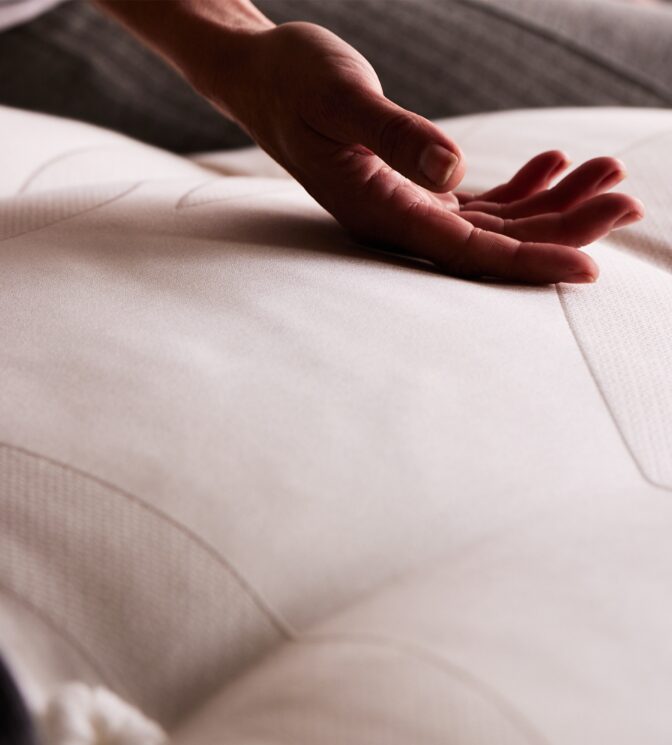
Try our Mattress Finder
Answer a few simple questions and let your mattress find you.
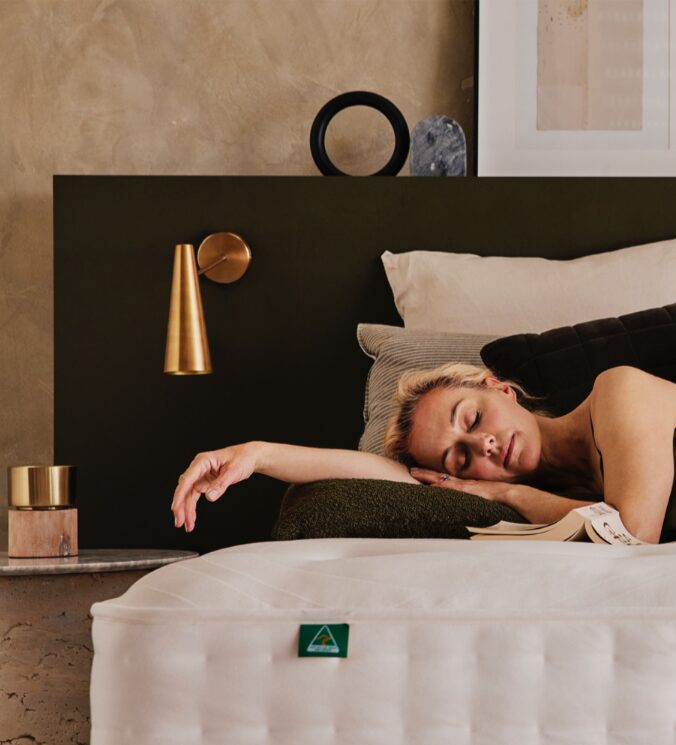
Let our Sleep Concierge help
Talk to our Sleep Concierge for a recommendation based on your personal needs.
This is by far the best mattress I have ever slept on. It was recommended to me by my sister as sleeping on this bed really helped with her back pain. And I can say that it has helped me immensely with my back issues. It is very comfortable and supportive.
Highly recommend this mattress
Multiple purchases have been made, for both family and our rental property. A good night’s sleep is such a basic requirement for health and happiness. A good quality mattress is the foundation.
We will continue to be proud to buy Australian. Well made and THE BEST.
The last bed we had for 12 years – a queen size A.H. Beard was great so we upgraded to a king size and are very happy with the Grand Harmony plush – great that they are made in Australia.
Rejuvenating
sleep isn’t far away
